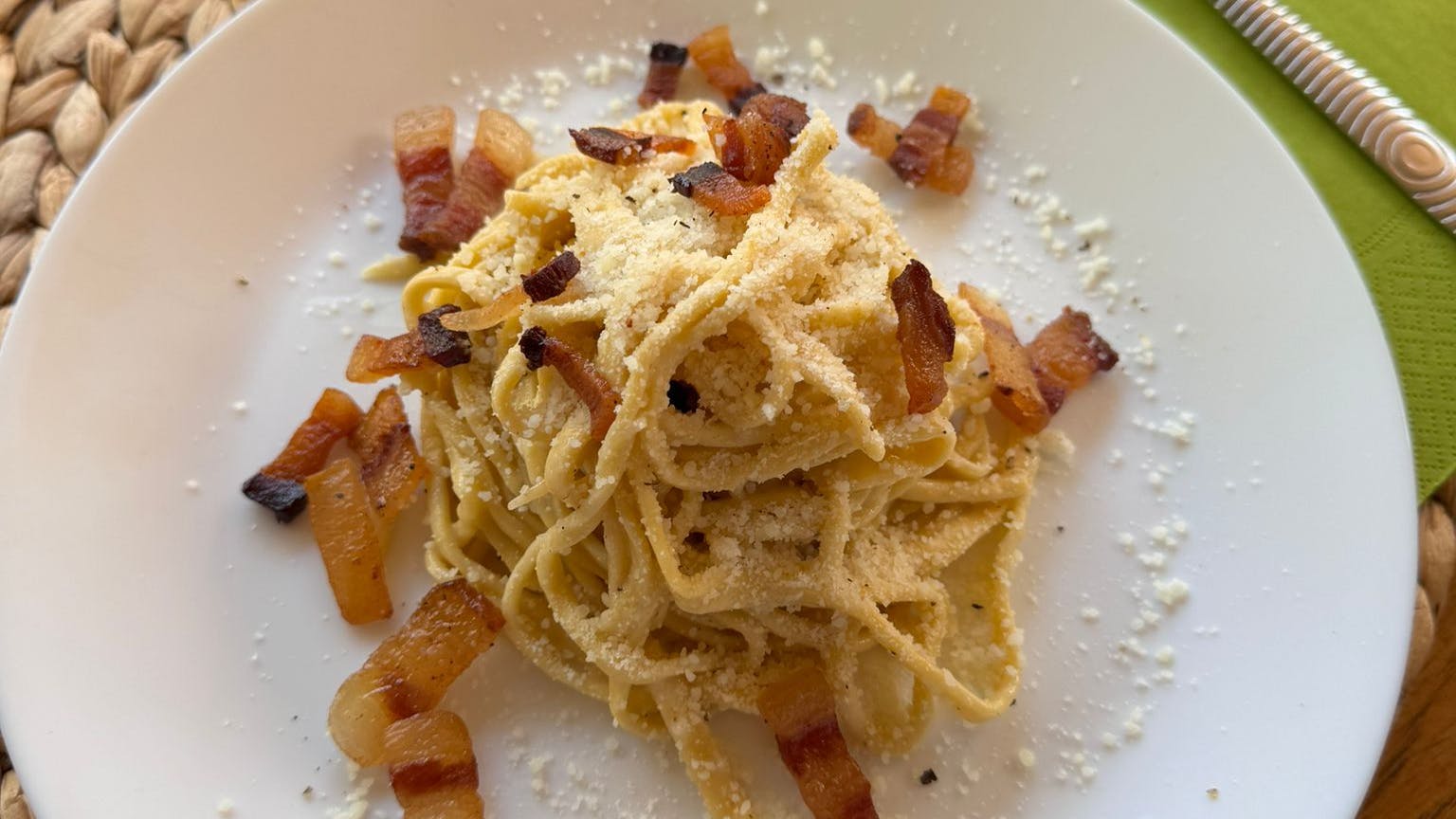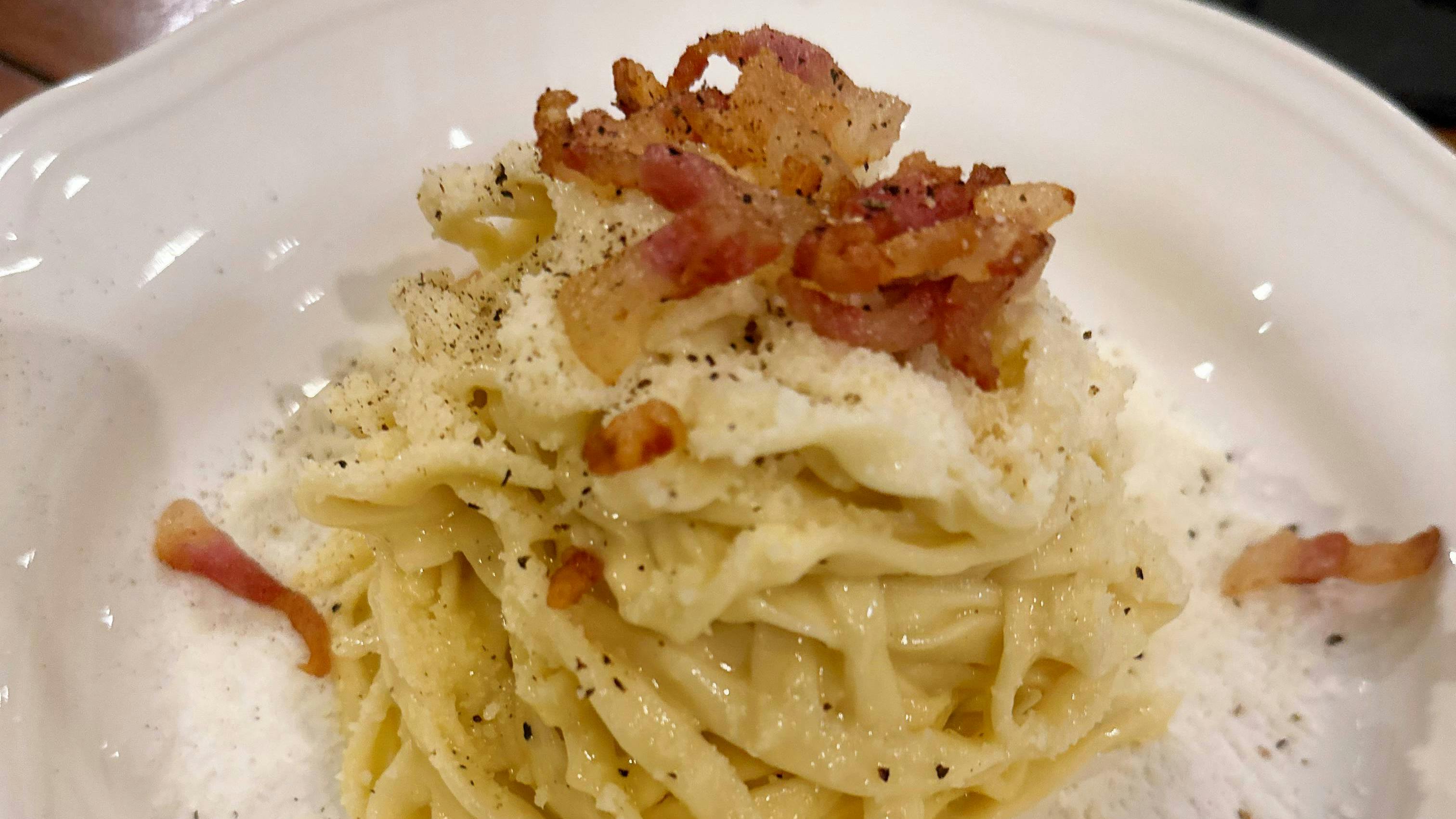

Returning from a getaway is always a bit of a shock, especially after visiting cities rich in history and culture. What better way to relive the memories and flavors of the trip than by preparing a traditional dish enjoyed during your stay?
Our Cesarina Cristina from Rome has shared with us the recipe for tonnarelli alla gricia, a dish with an authentic flavor that will transport anyone back to the alleys and squares of the Capital.

Tonnarelli alla gricia
A timeless Roman classic
Ingredients
- 100 g tonnarelli
50 g guanciale
50 g roman pecorino cheese
Black pepper to taste
Method
- Bring a pot of cold water to a boil. Meanwhile, cut the guanciale into strips and cook it in a non-stick pan over very low heat. The guanciale should "sweat," releasing its fat, and become crispy.
- Remove the crispy guanciale and keep it warm, leaving the fat in the pan.
- Cook the pasta in boiling salted water, drain it "al dente," and finish cooking it in the pan with the guanciale fat (add some pasta water if needed).
- Once off the heat, add the pecorino cheese and the crispy guanciale, tossing everything until it becomes creamy.
The origins of pasta alla gricia
Pasta alla gricia has ancient origins and is considered the predecessor of amatriciana, sharing the same basic ingredients but without the addition of tomato. According to one of the most accredited theories, the dish originated in Grisciano, a fraction of Accumoli in the province of Rieti. Another theory connects the name to the word "gricio," used in Rome to refer to the vendors of bread and foodstuffs, many of whom came from the Swiss canton of Grigioni. The recipe is believed to have been created by the shepherds of the Central Apennines, who during their seasonal migration carried easily preservable foods like dry pasta, guanciale (cured pork cheek), pecorino cheese, and black pepper.
Among other traditional Roman dishes that share ingredients and philosophy with gricia, we find carbonara, which adds egg to the sauce, and amatriciana, which introduces tomato. Even cacio e pepe has much in common with gricia, featuring pecorino and pepper but without guanciale.
All of these dishes are made with a few simple ingredients but deliver intense flavors, typical of the poor cuisine of Lazio.
Gricia pairs perfectly with typical Roman side dishes, such as carciofi alla giudia (Jewish-style artichokes), puntarelle alla romana (chicory shoots with anchovies), and cicoria ripassata in padella (sautéed chicory), whose slightly bitter flavors contrast beautifully with the saltiness of guanciale and pecorino cheese.
